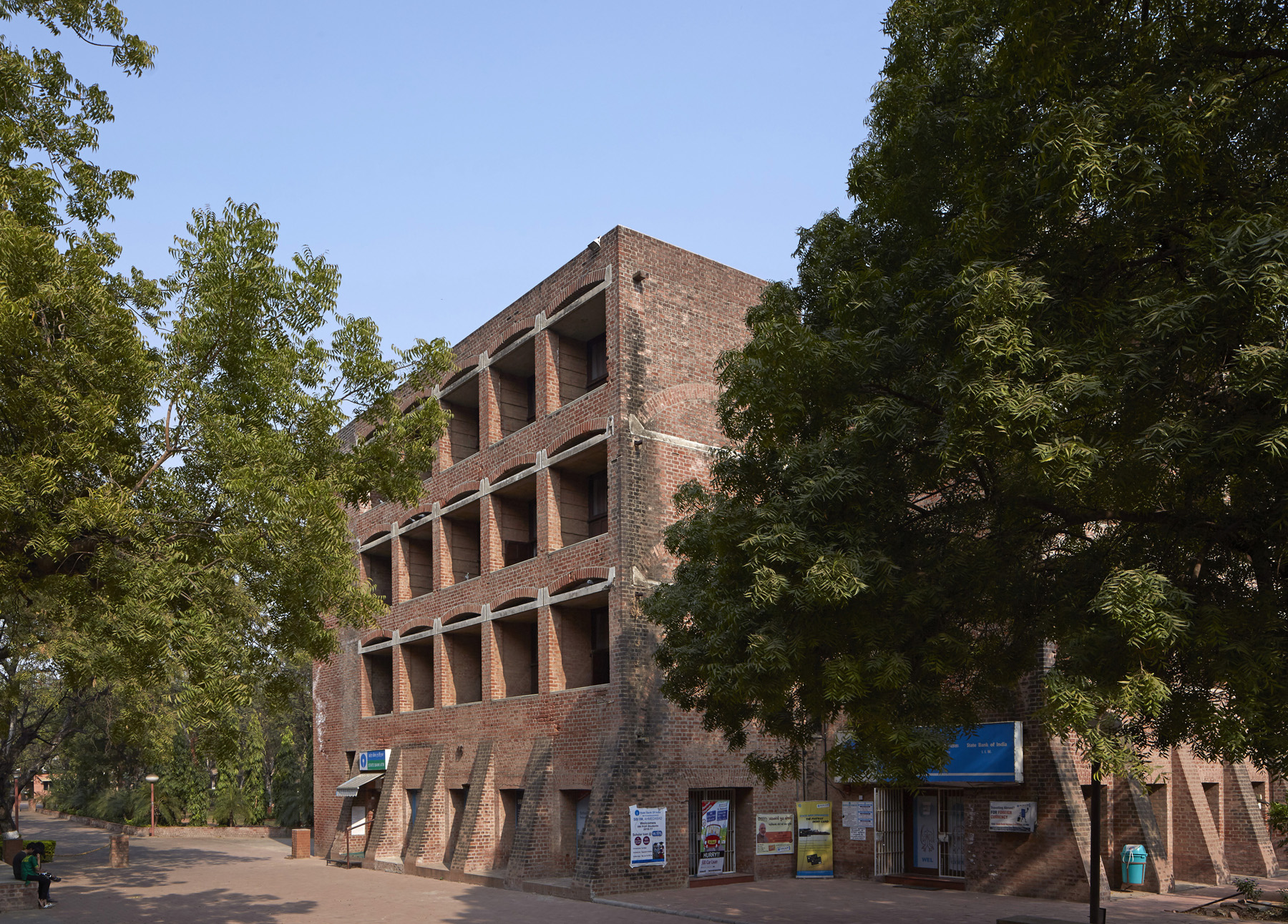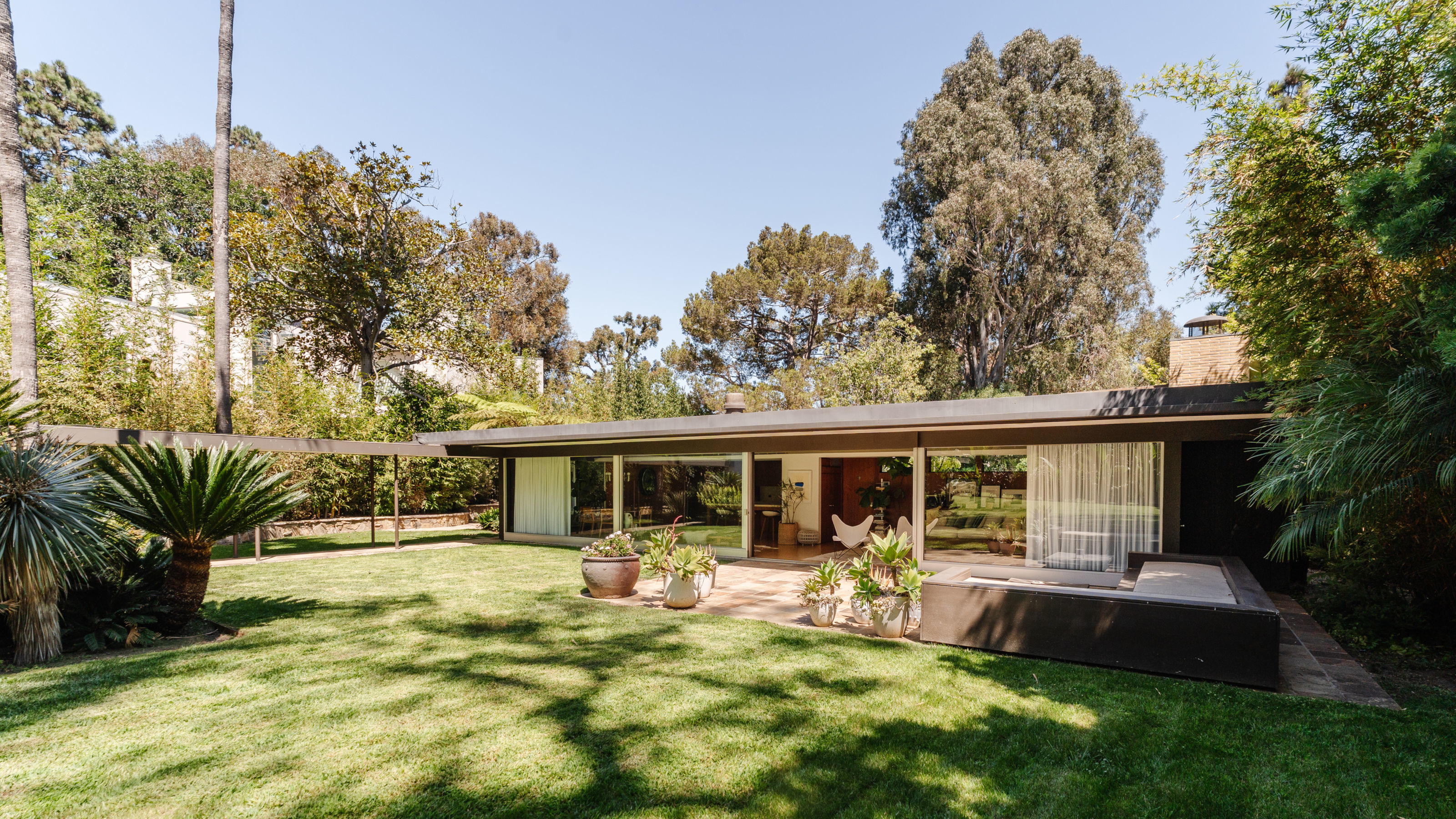Saving the IIM Ahmedabad dormitories by Louis Kahn
We discuss the threat to the Indian Institute of Management's Ahmedabad dormitories by Louis Kahn with Noor Dasmesh Singh (architect, urbanist and principal of award-winning NOOR Architects Consultants based in Chandigarh, India)
Edmund Sumner - Photography

As a World Heritage preservation controversy brews, the administration at the Indian Institute of Management in Ahmedabad (IIM-A), just a short time ago, was set to proceed with its plans to raze 14 out of the 18 modernist Ahmedabad dormitories in Louis Kahn's complex for the Indian school. A row kicked off as the design community and citizens initiated a campaign against the decision of the management. It got support from global organisations and individuals including Pritzker Prize laureates, the Council of Architecture in India, MoMA and the World Monuments Fund. Consequently, the management decided to put the demolition on pause for now.
Louis Kahn's Ahmedabad dormitories
In the Americas, Kahn is known for masterpieces, such as the Salk Institute in California, Philips Exeter Academy Library and the Kimbell Art Museum in Texas. In Asia, major works include the National Assembly Building in Dhaka, and the IIM-A campus is widely considered one of his finest contributions. The campus, built between 1962 and 1975, has a distinct modernist sensibility with its geometrical openings and sculptural monolithic brick structures. Brick is matched by concrete bracing elements. Kahn drew inspiration from historical treasures, such as the 15th-century palaces of Mandu in India and the brick cylinders of Albi Cathedral in France.
It is unfortunate that, as per current Indian laws, only buildings over 100 years old can be defined as ‘heritage’. Anything less than that doesn’t have legal protection against alterations or even demolition. It is high time the Indian legal ambit is revised to include structures of significance under the 100-year-old cap as well. This will protect similar modernist architecture jewels in the country, such as Le Corbusier’s Mill Owners’ Association Building in Ahmedabad and his buildings in Chandigarh (although the latter at least lie in a protected zone due to their Unesco World Heritage status).

In 2016, well-regarded Indian practice Somaya & Kalappa Consultants (SNK) undertook restoration of one of the worst-affected dormitories. This was taken up as a ‘trial’ conservation job after SNK won a competition to restore Kahn’s campus. Two years and a painstaking restoration process later, works had reconstructed 85 cracked brick flat arches on the eastern façade and upgraded reinforcement bars; yet this did not convince the IIM-A management to carry forward the engagement to the remaining dormitories.
On 23 December 2020, IIM-A director Errol D’Souza published an 11-page letter elaborating on the reasoning behind the decision to demolish, stating that while the school is doing ‘all it takes' to preserve the complex, ‘for a few of the dorms, there will be a new history’. He assured readers that any new buildings will ensure a relationship of continuity with the surrounding modernist architecture by Kahn; but that as things stand, ‘students hardly use these shared spaces, as they have gravitated to virtual modes’.
Questions are therefore raised on the management of the institution. As temporary custodians of Kahn's work, is it right to tamper with a shared cultural legacy of such stature? Was the outcome of the preservation job not satisfactory? SNK was given a Unesco award in 2019 for its earlier restoration works carried out at the same school's library block. And who is responsible for the levels of deterioration the dormitories reached in the first place, to allow for this course of action to even be considered? The Indian architecture community – and as an architect and urbanist of Indian origin, I am part of this problem – needs to step up and protect the legacy that we inherited from our past.
For now, the outcry forced the institution to put on hold the online bidding process that would select an architect to build in the great modernist master’s footprint. It is heartening that Kahn’s children, Sue Ann Kahn, Alexandra Tyng and Nathaniel Kahn, have also expressed their shock at the development by writing to D’Souza. Raising public awareness may be one way of temporarily holding back further action, but surely legal and policy measures are need to avoid such misadventures in the future.
Receive our daily digest of inspiration, escapism and design stories from around the world direct to your inbox.
-
 In Norway, discover 1000 years of Queer expression in Islamic Art
In Norway, discover 1000 years of Queer expression in Islamic Art'Deviant Ornaments' at the National Museum of Norway examines the far-reaching history of Queer art
-
 The Wilke is LA’s answer to the British pub
The Wilke is LA’s answer to the British pubIn the Brentwood Village enclave of Los Angeles, chef and restaurateur Dana Slatkin breathes new life into a storied building by one of Frank Gehry’s early mentors
-
 Top 10 gadgets of 2025, as chosen by technology editor Jonathan Bell
Top 10 gadgets of 2025, as chosen by technology editor Jonathan BellWhat were the most desirable launches of the last 12 months? We’ve checked the archives to bring you this list of the year’s ten best devices
-
 The Architecture Edit: Wallpaper’s houses of the month
The Architecture Edit: Wallpaper’s houses of the monthFrom wineries-turned-music studios to fire-resistant holiday homes, these are the properties that have most impressed the Wallpaper* editors this month
-
 This modernist home, designed by a disciple of Le Corbusier, is on the market
This modernist home, designed by a disciple of Le Corbusier, is on the marketAndré Wogenscky was a long-time collaborator and chief assistant of Le Corbusier; he built this home, a case study for post-war modernism, in 1957
-
 Louis Kahn, the modernist architect and the man behind the myth
Louis Kahn, the modernist architect and the man behind the mythWe chart the life and work of Louis Kahn, one of the 20th century’s most prominent modernists and a revered professional; yet his personal life meant he was also an architectural enigma
-
 The Architecture Edit: Wallpaper’s houses of the month
The Architecture Edit: Wallpaper’s houses of the monthFrom Malibu beach pads to cosy cabins blanketed in snow, Wallpaper* has featured some incredible homes this month. We profile our favourites below
-
 Three lesser-known Danish modernist houses track the country’s 20th-century architecture
Three lesser-known Danish modernist houses track the country’s 20th-century architectureWe visit three Danish modernist houses with writer, curator and architecture historian Adam Štěch, a delve into lower-profile examples of the country’s rich 20th-century legacy
-
 The Architecture Edit: Wallpaper’s houses of the month
The Architecture Edit: Wallpaper’s houses of the monthThis September, Wallpaper highlighted a striking mix of architecture – from iconic modernist homes newly up for sale to the dramatic transformation of a crumbling Scottish cottage. These are the projects that caught our eye
-
 Richard Neutra's Case Study House #20, an icon of Californian modernism, is for sale
Richard Neutra's Case Study House #20, an icon of Californian modernism, is for salePerched high up in the Pacific Palisades, a 1948 house designed by Richard Neutra for Dr Bailey is back on the market
-
 The best of California desert architecture, from midcentury gems to mirrored dwellings
The best of California desert architecture, from midcentury gems to mirrored dwellingsWhile architecture has long employed strategies to cool buildings in arid environments, California desert architecture developed its own distinct identity –giving rise, notably, to a wave of iconic midcentury designs